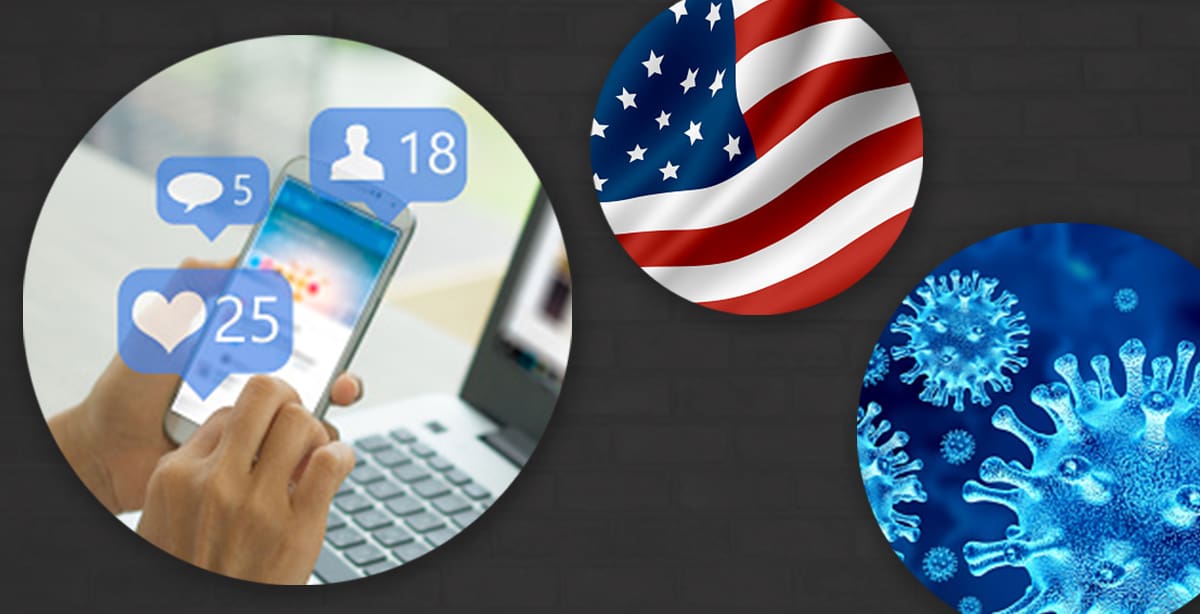2020 is a year that’s been full of unknowns. But even with all of the changes this year, some things in advertising remain true. One of those things is the fact that paid social platforms – Facebook/Instagram, Snapchat, Twitter, LinkedIn, Pinterest, TikTok, YouTube, etc. remain some of the most cost-effective ways for a brand to increase overall awareness and drive conversions on their website and on Amazon. But that doesn’t mean it’s easy. There are factors of 2020 that make being effective with your ad dollars harder than years past. Let’s take a look at Fall 2020 to see what’s influencing inventory and results in the space and how you can improve your results.
The Good
Even in 2020, there are positives in the paid social media space. To start, social media usage is higher than it’s ever been. In the U.S., 51% of adults have used social media more since the pandemic began (Business Insider). This gives brands the opportunity to gain more exposure to their potential consumers. Plus, other social media platforms like TikTok – which now has over 100 million active U.S. users (CNBC) – have fully implemented or upgraded their paid advertising options, using pixel data to optimize towards conversion/purchase. While Facebook/Instagram are still the primary social media platforms that drive acquisition (Big Commerce), the opportunity to spread dollars across different platforms as inventory becomes very tight in Fall 2020 will be important. In addition, looking at paid social ads as a whole from brand awareness through conversion, the cost per thousand impressions (CPM) has actually gone down in 2020, making it less expense for advertisers to have a presence on the platforms (Wall Street Journal).
The Bad
The Pandemic…I know, I know. Everyone is ready to stop talking about it. But its effects on the financial security of consumers and the way it greatly accelerated the push to e-commerce is worth talking about. When retail stores were forced to shut down in the spring, companies who were prepared immediately pivoted to direct to consumer sales online, both on their websites and on Amazon. Even though ads overall on social media became less expense during the pandemic, the ads that optimize towards conversion or purchase are some of the most expensive on the platforms, and those ads are shown only to consumers that the algorithms believe will purchase, making the audience more limited. When more e-commerce ads are on the platforms, the more expensive it is to get conversions and purchases. Online shopping purchases at stores who are hosted on the Shopify platform increased 45% just from March to April in 2020, and a lot of brick and mortar stores may continue as a brick and click model, even after the pandemic (CNBC). In addition, adults 65+ shopped online 43% more so far in 2020 than they did in 2019 due to COVID-19 (Essential Retail). On the flip side of that, for many consumers, the full impact of the pandemic on their financial health is not even fully understood as the pandemic is still occurring (Money Fit). As some people head back to work and begin trying to repair their financial status, many others still remain out of work, so the pool of consumers who have the dollars to purchase non-essential products online this fall will likely be smaller.
The Ugly
Political Advertising…the bane of every advertiser’s existence, especially in a Presidential Election year. The fall political window does not even begin until September 5th, yet from August 17th – August 26th, over $13 million was spent on Facebook ads from presidential candidates alone (Facebook). While TV remains the most used media tactic for candidates and issues, the presidential primaries this year showed a large shift of dollars to digital, especially paid social, with Facebook receiving a 60% share of digital dollars (eMarketer). The same will more than likely hold true for the fall political window, and with total political dollars spent expected to be at or about $6.7 billion and spend year to date already up about 50% over 2016, (NBC News) brands are going to have to be smart to compete for ad space on social media platforms. Making things even more difficult, over 80% of political ads from presidential candidates on digital/social platforms are direct response ads, so they lead directly to conversion (usually donation) or email acquisition (Politico). Unfortunately for e-commerce brands, those are the main paid social ad types to get online purchases as well, and it’s hard to compete with political dollars in ad auctions. Political spending will also most likely push holiday spending from brands to later in November, narrowing the window where dollars will be spent, making social ad platforms tighter through the end of the year.
Can Your Brand Still Win On Paid Social In Fall 2020?
The short answer is YES! But it’s going to take some work and flexibility to be successful. Here are a few tips to help make your brand stand out.
- Take advantage of the still less expensive brand awareness, website traffic and video ads on the platforms in order to get your brand in front of the most people as possible. Those will be the ads least affected by e-commerce and political dollars.
- Be laser-focused on your target audience(s).
- Test at least four or five audiences for every campaign in order to see which audiences have inventory pressure on them and which are in the position to perform.
- On Facebook, watch the Insights for each ad set and pay attention to how much competition there currently is for your audience each day.
- Know which states are being classified as swing states at any given time. More political dollars will be spent in those states than others, making it harder for you to get conversions.
- Be nimble in moving ad dollars between platforms if campaigns are not doing well. Be prepared with your creative in advance as each platform should have creative that resonates organically in the platform.
If done right, paid social advertising should still be one of your most effective awareness and conversion platforms this fall, even with all of the issues 2020 has brought along with it. Need help navigating paid social or other paid media for your brand? The Brandon Agency can help with all of your digital and traditional media placement needs. Contact us to get started.

